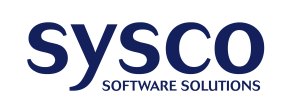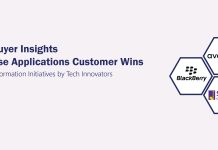On the heels of one of the worst recessions in history, large organizations have started investing in business transformation projects that could breathe new life into the enterprise applications market.
If it proves to be a trend, these projects, which often carry big hairy audacious goals(BHAG) to reshape how a company does business from both tactical and strategic standpoints, could have serious ramifications for a cross-section of apps vendors and their implementation partners.
Big business transformation IT projects were cited as one of the reasons behind the strong earnings results of Accenture, which posted a 5% rise in sales to $5.4 billion reaching the high-end of its projection while its net income jumped 67%. Because of strong demand for its consulting services in areas such as ERP upgrades and implementations, Accenture went on a hiring spree to take its headcount above 200,000 for the first time.
Bill Green, chief executive of Accenture, attributed the stellar performance to increased business transformation projects including SAP ERP upgrades from older versions of R2 as well as implementations designed to bring greater insights to SAP business users with the use of advanced analytics and the latest apps technologies.
In addition to Accenture, a number of large systems integrators such as Deloitte have benefited from such business transformation projects. Some of the most heavily attended sessions at the recent Oracle Open World had to do with helping Oracle E-Business Suite customers prepare for and better execute their planned upgrades to achieve high return on their technology investment as well as realize significant business value.
Nowhere is the BHAG more apparent than the on-going implementation of SAP Business Suite and SAP BusinessObjects business intelligence solutions at Sysco, a $37-billion food service distributor. Led by Deloitte Consulting, the SAP implementation will have cost Sysco, more than $50 million as part of its business transformation project.
Slated to run from 2009 to 2012, the four-year project carries a stupendous price tag of $900 million because of the size of the company that entails the decommissioning of numerous home grown and third-party systems after years of acquisitions, the involvement of more than 300 Sysco executives and their associated costs, and the creation of a shared service structure that consolidates all major business areas from finance to supply chain.
Central to the project is the use of SAP Customer Relationship Management application to enable Sysco’s sales and marketing team to access the customer information they need to manage accounts better. What Sysco hopes to accomplish is to use the fully integrated SAP systems to better serve its customers through careful analysis of their purchase history as well as improved order management and execution capabilities including customer self-service, rich media experience like streaming food preparation video online and supplier collaboration especially in the area of category management.
In order to satisfy its shareholders, Sysco has already projected the payoff from the project to kick in starting with a positive impact of $136 million to its 2014 earnings and $201 million the following year. The expected benefits will manifest themselves through reduced inventory and supplier receivables, and higher customer retention and improved profitability in serving new customer segments.
Although the expected outcome is years away, such business transformation projects could be the wave of the future because of the confluence of powerful market forces from globalization to customer intimacy, which will only strengthen within verticals like distribution where tremendous consolidation has ushered in a number of megaplayers.
In fact more of these ambitious and transformative applications projects could be coming from the distribution vertical in the coming years because of the increasing concentration of power within segments that are beginning to converge. In addition to selling to restaurant chains, Sysco also serves hospitals, schools and hotels. And it makes strategic sense for Sysco to not just ship them food and consumer products, but also hard goods like furniture or soft goods like uniforms. Many distributors are adding product lines not just to meet their customer requirements, but also the cumulative effects of proliferation of SKUs and assortments from the suppliers.
All these line extensions will mean an explosion of data, creating a greater demand for role-based information with a specific set of buyers and users in mind, something that cannot be easily reproduced or presented using an inflexible legacy system.
Business transformation projects with BHAG in mind are not limited to the distribution vertical. Last week Lawson announced a $1 million+ license deal to sell a full suite of HCM, talent management, and payroll applications to Fairview Health Services, an integrated delivery network with seven hospitals, 48 clinics and 22,000 employees in Minnesota. In its latest quarter, Lawson experienced a 21% rise in software contracting with robust performance for its S3 and HCM sales to customers in healthcare and public sector verticals.
These big projects are considered the tip of an iceberg with the potential of jumpstarting the entire enterprise applications market. One big reason has to do with the increased conviction that putting off these projects is no longer feasible because of brutal market forces from rising commodity prices to changing customer lifestyles as a result of the online revolution. Companies could choose to engage in big or small business transformation projects, but doing nothing is no longer an option for any organization wanting to transform itself in order to better compete in the future.






